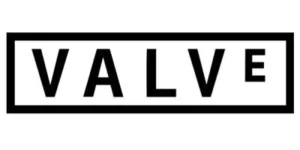Gabe Newell, the CEO of Valve has talked about Valve and its position in VR gaming market. The interview was reported by Polygon and includes a lot of personal observations about Valve besides some very interesting nuggets in regards to VR. While lengthy, it is certainly good reading for everyone interested in VR technology.
The Steam platform is supporting VR and is seeing a very healthy growth. They have 1,300 VR apps on the platform right now and saw a 86% increase of monthly users in the second half of 2016. So far, 30 VR apps have made over $250,000, not a great deal by gaming apps standards. Newell also said “We’re optimistic. We think VR is going great. It’s going in a way that’s consistent with our expectations. We’re also pretty comfortable with the idea that it will turn out to be a complete failure.”
His concerns about the viability of VR are in regards to the hardware capabilities, “it’s barely capable of doing a marginally adequate job of delivering a VR experience.” He compares VR to the early days of computing, where people tried to figure out what to use a PC for. His take is that the spreadsheet made the PC a must have piece of equipment for business. From there, it eventually became a consumer device, driving sales numbers to new heights.
Besides this hurdle, he sees that some are trying to create an Apple-like ‘walled garden’ approach that will certainly not go well with Valves’s business model. Then there is the question of price and content availability. Even with an 80% cost reduction, adoption rates for VR will not explode. The performance is just not there, today. to support really compelling content.
Analyst Comment
This position is very close to my own beliefs, however for quite different reasons. Interestingly, Newell believes that VR display resolutions will explode in the 2017/2018 time frame. His concerns are more with the processor and GPU capabilities It seems that more and more people are trying to damp down the expectations of the VR development to a more realistic level, without declaring it a failure yet. He definitely hedged against that possibility as well. (NH)
I would also point out that an Apple ‘walled garden’ was not the early approach that enabled the Visicalc spreadsheet on the Apple ][ to dominate the early PC business and force microcomputers into corporate applications. At that time, Apple had a very open and ‘platform-based’ approach. Famously, although the Apple ][ used Apple DOS and a 6502 processor, the hardware was used as the base for CP/M boards that included another CPU with its own memory so that software such as WordStar could also run. In the end, the Apple base became the largest installed base of CP/M computers. (BR)

